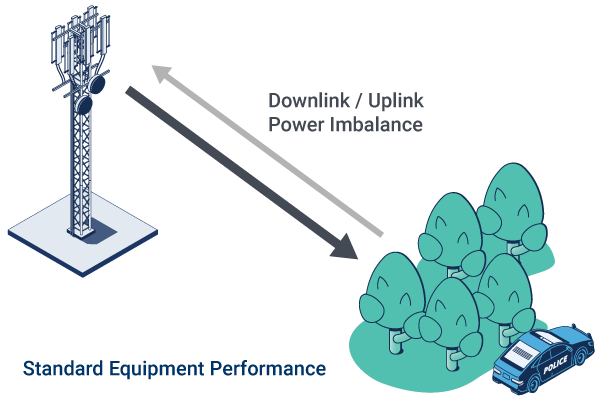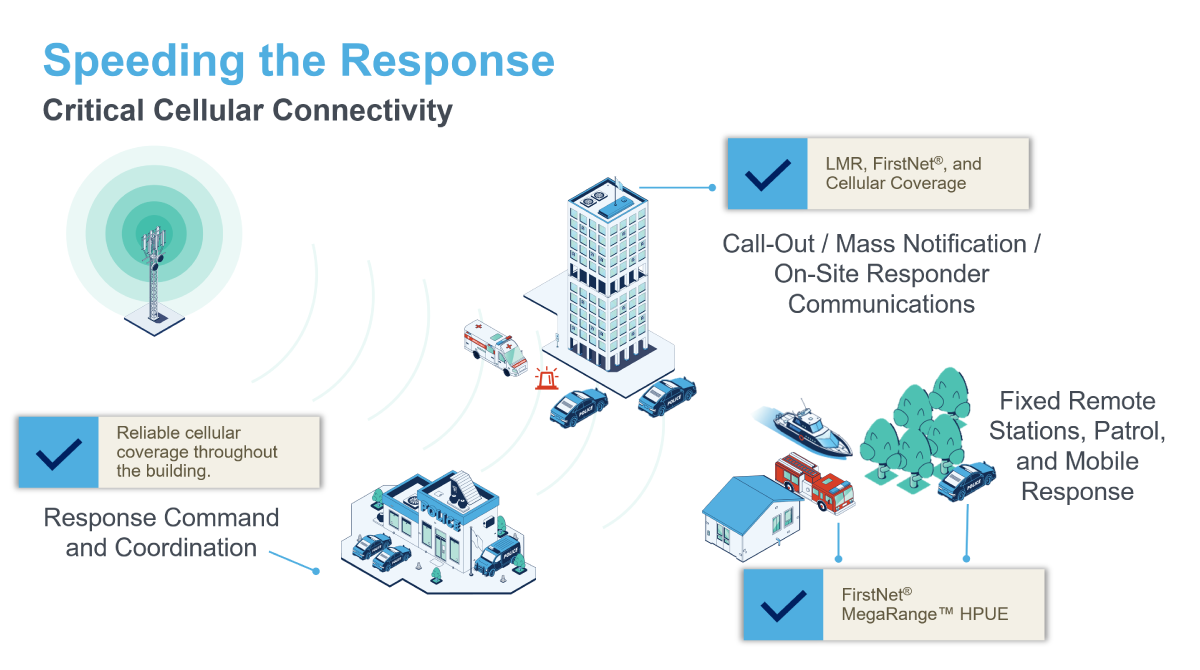
Since the 1970’s, the frequency of natural disasters has risen four-fold to an average of 13 per year. Coupled with a similar rise in the number of manmade disasters, our Public Safety and Emergency Response systems need the latest technology to keep up with the demand and to meet the public’s expectations.
In 2012 Congress created the First Responder Network Authority (FirstNet Authority), which in 2017 partnered with AT&T to build FirstNet®, the nation’s public safety wireless broadband network. FirstNet is designed for every first responder (primary users) and those critical to supporting their emergency response (extended primary users) – such as hospitals, utilities, and restoration crews. There are currently more than 5 million FirstNet connections and more than 26,000 public safety agencies and organizations subscribed (as of Q2 2023).
The FirstNet network operates on all AT&T commercial band frequencies, as well as Band 14 — nationwide, high-quality spectrum set aside by the U.S. government specifically for FirstNet.
What is HPUE?
High Power User Equipment (HPUE) is a special class of user equipment (devices) that increase device transmission power by six times (6x). In the U.S., this increased signal can only be transmitted using Band 14. This power increase translates to significant connectivity improvements in terms of range, coverage area, and uplink speeds.
Cellular connectivity (e.g., signal strength, range, or coverage for voice, video, and data) is limited by uplink power in standard devices. Per the 3GPP standard, the downlink direction in an LTE system has more range than the uplink due to the limited transmit power available in a handset. HPUE technology increases the uplink power and balances the uplink and downlink ranges – without damaging the network – which is what enables greater connectivity.

The 3GPP international mobile broadband standards group has defined HPUE as Power Class 1. 3GPP Power Class 1 devices allow +31 dBm power output (1.25 Watts) while standard Power Class 3 devices allow + 23 dBm (200 mW). Typical consumer cellular devices are Power Class 3.
Benefits of HPUE
With the increased uplink power, HPUE provides a more robust, far-reaching signal. For users, this means better connectivity in rural areas and hard-to-reach places such as valleys, mountains, off-shore areas, and wooded or forested expanses. In urban areas, the extra power increases coverage in building shadows, underground, and other shielded environments.
There are many environmental and technological reasons cellular signals may be blocked or affected by interference. In life-saving and essential communication applications, it only makes sense to have the highest power available to maintain the best connection possible. It is widely estimated by the U.S. government that 10,000 lives could be saved each year by shaving one minute off 9-1-1 response time. With so many communications relying on cellular connectivity – from the first 9-1-1 call to mass notifications to response coordination and on-the-scene video feeds, the more people with reliable connections, the better the situation can be managed.

HPUE and FirstNet
Nextivity HPUE are the only devices authorized to operate at high power on Band 14 of the FirstNet network. The proprietary FirstNet MegaRange™ technology was developed specifically to serve the needs of FirstNet users who need strong reliable cellular connectivity for live-saving and essential communications. Responding to 9-1-1 calls from rural communities and providing emergency services in remote locations – where lives may be at stake – is challenging enough without extra complications brought about by poor communications / coordination. Everyone responding, and at the scene, needs a reliable signal coverage to transmit and receive the most up-to-date information.
Besides more power, FirstNet MegaRange technology offers additional benefits to First Responders. HPUE creates an optimized link resulting in a higher-order modulation that improves the efficiency and capacity of the base station facilities and makes more spectral efficient use of the network. This means data goes faster, frees up network resources for others, and reduces retransmissions and retries due to weak signal links.
Band 14 is in the 700 MHz “sweet spot” of the LTE bands, so it inherently has much better range and coverage than higher frequency LTE bands. The use of HPUE has been shown in field tests to increase the range of standard Band 14 signals by 80% and more than triple the coverage area of a base station. At shorter distances, the reserve power provided by HPUE can optimize the signal to provide significant improvements in data speeds, especially in uplink speeds from the field. Uplink speeds are especially important to First Responders for streaming or uploading videos, telemedicine, and other data-intensive field communications.
HPUE Beyond Band 14
HPUE technology is not limited to use on Band 14 globally. The technology itself may be applied to other bands, as approvals are obtained to transmit at higher powers. Currently bands 3, 20 and 28 are authorized for use outside the United States and we expect to see growth in adoption of the technology worldwide in the coming years.
With the ever-changing environmental conditions, growth in cities, new construction materials, mobility of the population coupled with our increasing need for First Responders to be connected and reachable 24/7 it only makes sense to use the highest power devices legally available when lives are at stake.
FirstNet and the FirstNet logo are registered trademarks and service marks of the First Responder Network Authority. All other marks are the property of their respective owners.